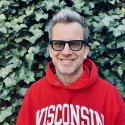Efforts to recruit, retain minorities cited
The National Institute of General Medical Sciences, part of the National Institutes of Health, recently highlighted three UW–Madison training programs among the top in the country when it comes to recruiting and retaining underrepresented minority students.
With 292 research programs funded at the graduate and postdoctoral level, NIGMS encourages the participation of underrepresented minority students in biomedical and behavioral research. The students include African Americans, Hispanic Americans, Native Americans, Alaskan Natives and Pacific Islanders.
UW–Madison was recognized for the percentage of these students enrolled in its NIGMS-funded Chemistry-Biology Interface Predoctoral Program (27 percent), Molecular Biosciences Training Grant (16 percent) and Neuroscience Training Program (16 percent).
Ann Kelley, psychiatry professor and director of the neuroscience program, says this particular NIGMS program owes much of its success in recruiting and retaining underrepresented minority students to its faculty, many of whom are dedicated to teaching and mentoring.
Few of the faculty in this program are themselves minorities, says Kelley, but many of them attend national conferences for minority students or scientists, distribute program brochures at undergraduate career fairs or host minority summer research students — all in an effort to draw these students to UW–Madison.
Once here, Kelley says the program does its best to create a community in which the underrepresented minority students feel that they belong. One way in which the program does this, adds the director, is by hosting a lecture series that invites neuroscientists from underrepresented minority groups to campus, where students can interact with them during presentations, brown-bag discussions and dinners.
Creating a diverse community within the sciences enriches not only those individuals directly involved, but potentially the whole of society and science, says Laura Kiessling, professor of biochemistry and chemistry, and director of the chemistry-biology NIGMS program, which employs recruitment and retention strategies similar to those of the neuroscience program.
“Individual experiences and perspectives can influence what scientific questions are asked,” she says. “Science will advance rapidly when its practitioners have such diverse views and perspectives.”
While Kelley and Kiessling say that their programs still face many hurdles when it comes to improving student diversity, they add that recognition from NIGMS shows that they’re on the right track and provides momentum to continue their efforts.
“Increasing diversity and improving climate are important priorities for the campus,” says Provost Peter Spear. “The outstanding records of these training programs contribute significantly to achieving these goals. They also help increase the pipeline for more diverse future graduate students and faculty in the sciences.”
Tags: diversity



